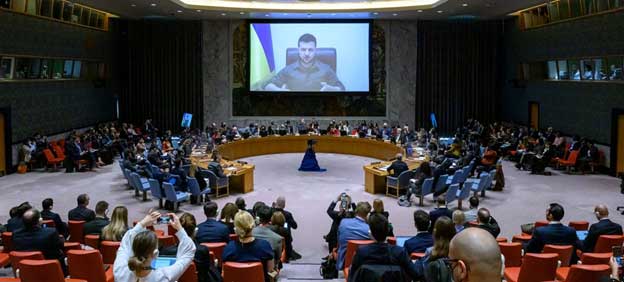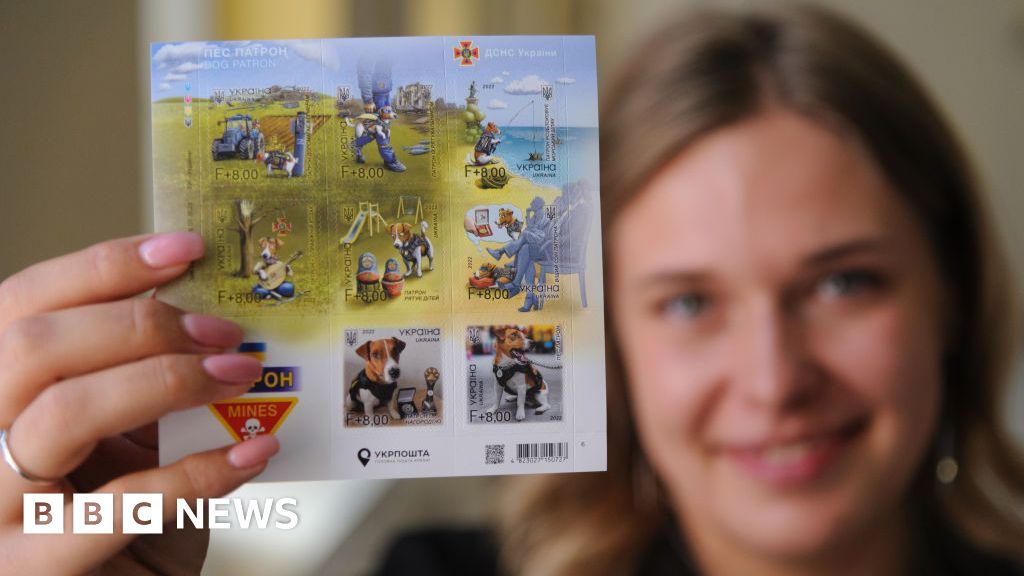US in Proxy War with Russia Doles out 100 Billion Dollars in Aid & Arms to Ukraine — Global Issues
UNITED NATIONS, Jan 02 (IPS) – A US Senator once described Ukrainian President Volodymyr Zelensky, perhaps facetiously, as “a Winston Churchill in a tee shirt”.
And last month, when he addressed the US Congress – with the presence of about 100 Senators and 435 Congressmen – he tried to re-live that moment.
While most of the Senators and Congressmen were in business suits for the formal occasion, Zelensky opted for green military fatigues and a matching sweatshirt
And he was the second war-time head of government to address the US Congress, after British Prime Minister Winston Churchill’s 1941 address to Congress during World War II.
In his address December 21, the 44-year-old Zelensky appealed for increased economic aid, sophisticated weapons and security assistance.
According to a report in the New York Times last month, if Congress passes the budget bill (it did), the US aid to Ukraine since the Russian invasion last February would amount to a hefty 100 billion dollars “allocated over four emergency spending packages.”
“We have artillery, yes thank you,” Zelensky told Senators and Congressmen, “We have it. But is it enough? Honestly, not really?”
Although the US has been sending a staggering array of weapons, including 1,400 Stinger missiles, GPS-guided joint Direct Attack Munition (JDAM) and the Patriot missile system, Ukraine has requested even more advanced weapons, including M1A2 Abrams battle tanks and F-16 fighter planes.
But the US is holding back both for security reasons.
According to the State Department, more than 40 US allies, have provided economic aid, political support or weapons to Ukraine in its hard-fought battle with Russia, one of the world’s major nuclear powers.
Norman Solomon, Executive Director of the Washington-based Institute for Public Accuracy (IPA) told IPS while the Russian government is entirely responsible for its horrendous decisions to invade Ukraine and to persist with warfare there, the United States has refused to engage in actual diplomacy to avert the war or to seek a workable end to it.
The vast ongoing shipments of arms from the U.S. to Ukraine are of such a huge magnitude that they signify many billions of dollars in profits for U.S.-based weapons makers, he pointed out.
And those shipments of weapons represent eagerness in Washington to escalate the conflagration rather than seek ways to reduce and end it, said Solomon, author of “War Made Easy: How Presidents and Pundits Keep Spinning Us to Death”
“The tremendous quantity of weaponry flowing from the USA to Ukraine can be understood as an extension of the U.S.-led NATO approach to Russia since the fall of the Soviet Union — encirclement and confrontation with Russia instead of trying to find genuine geopolitical solutions for Europe as a whole.”
The U.S. withdrawals from the Anti-Ballistic Missile (ABM) Treaty in 2002 and from the Intermediate-Range Nuclear Forces (INF) Treaty in 2019, he argued, were reckless steps for conflict between the world’s two nuclear superpowers that could end in global omnicide.
Now, the United States is proceeding to maximize the profits of its military-industrial complex while boosting the likelihood that the war in Ukraine will keep getting worse. The vows of victory in Ukraine, he noted, are fervent expressions of madness in Washington and in Moscow.
“Rather than pursue avenues for diplomacy that could bring the terrible suffering in Ukraine to an end, the U.S. government policy is to further enrich U.S. military contractors and escalate even further a war that is already a catastrophic reality,” he declared.
US Secretary of State Antony Blinken told reporters last month the United States will continue to work closely with more than 40 allies and partners in support of the people of Ukraine as they defend their freedom and independence with extraordinary courage and boundless determination.
“We will continue to support Ukraine for as long as it takes, so it can continue to defend itself and be in the strongest possible position at the negotiating table when the time comes,” he declared.
In a “Fact Sheet” released last July, the State Department provided a partial breakdown of US arms to Ukraine, which includes:
Over 1,400 Stinger anti-aircraft systems; more than 6,500 Javelin anti-armor systems.
Over 20,000 other anti-armor systems.
Over 700 Switchblade Tactical Unmanned Aerial Systems.
126 155mm Howitzers and up to 411,000 155mm artillery rounds.
72,000 105mm artillery rounds.
126 Tactical Vehicles to tow 155mm Howitzers.
22 Tactical Vehicles to recover equipment.
16 High Mobility Artillery Rocket Systems and ammunition.
Four Command Post vehicles.
Two National Advanced Surface-to-Air Missile Systems (NASAMS).
20 Mi-17 helicopters.
Counter-battery systems.
Hundreds of Armored High Mobility Multipurpose Wheeled Vehicles.
200 M113 Armored Personnel Carriers.
Over 10,000 grenade launchers and small arms.
Over 59,000,000 rounds of small arms ammunition.
75,000 sets of body armor and helmets.
Approximately 700 Phoenix Ghost Tactical Unmanned Aerial Systems.
Laser-guided rocket systems—and more.
The United States also continues to work with its allies and partners to provide Ukraine with additional capabilities to defend itself
According to the Central Intelligence Agency (CIA), the Russian Federation’s military and paramilitary services are equipped mostly with domestically-produced weapons systems, although since 2010, Russia has imported limited amounts of military hardware from several countries, including Czechia, France, Israel, Italy, Turkey, and Ukraine.
The Russian defense industry is also capable of designing, developing, and producing a full range of advanced air, land, missile, and naval systems. As of 2021, Russia is the world’s second largest exporter of military hardware.
The Russian armed forces include approximately 850,000 total active-duty troops (300,000 Ground Troops; 40,000 Airborne Troops; 150,000 Navy; 160,000 Aerospace Forces; 70,000 Strategic Rocket Forces; approximately 20,000 special operations forces; approximately 100,000 other uniformed personnel (command and control, cyber, support, logistics, security, etc.); estimated 200-250,000 Federal National Guard Troops.
IPS UN Bureau Report
Follow @IPSNewsUNBureau
Follow IPS News UN Bureau on Instagram
© Inter Press Service (2023) — All Rights ReservedOriginal source: Inter Press Service
Check out our Latest News and Follow us at Facebook
Original Source







